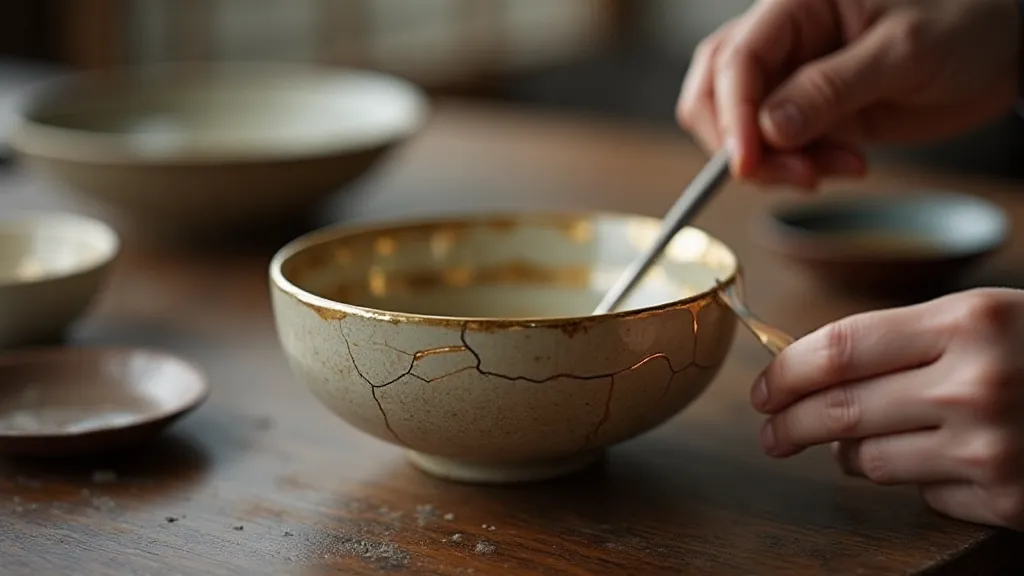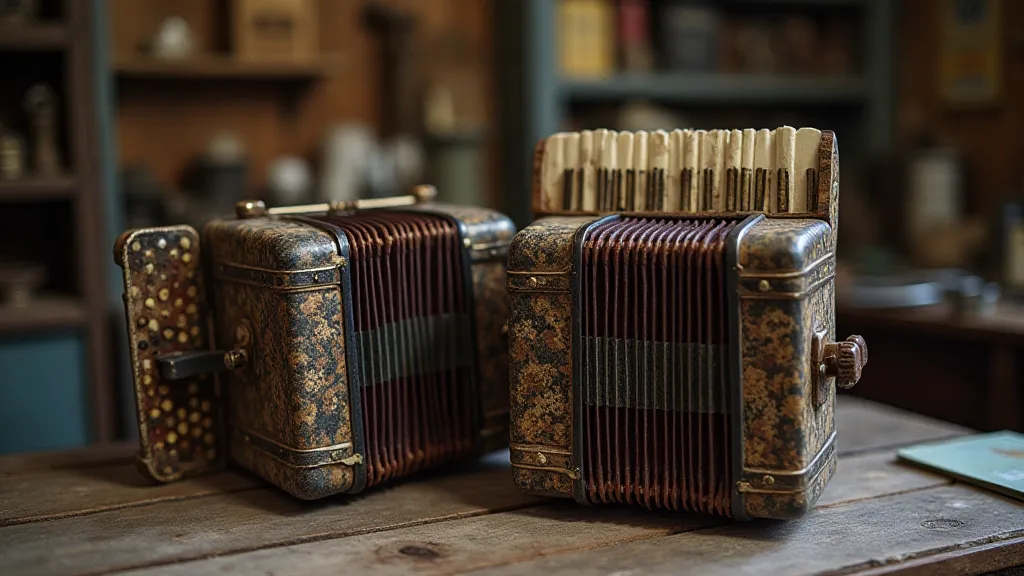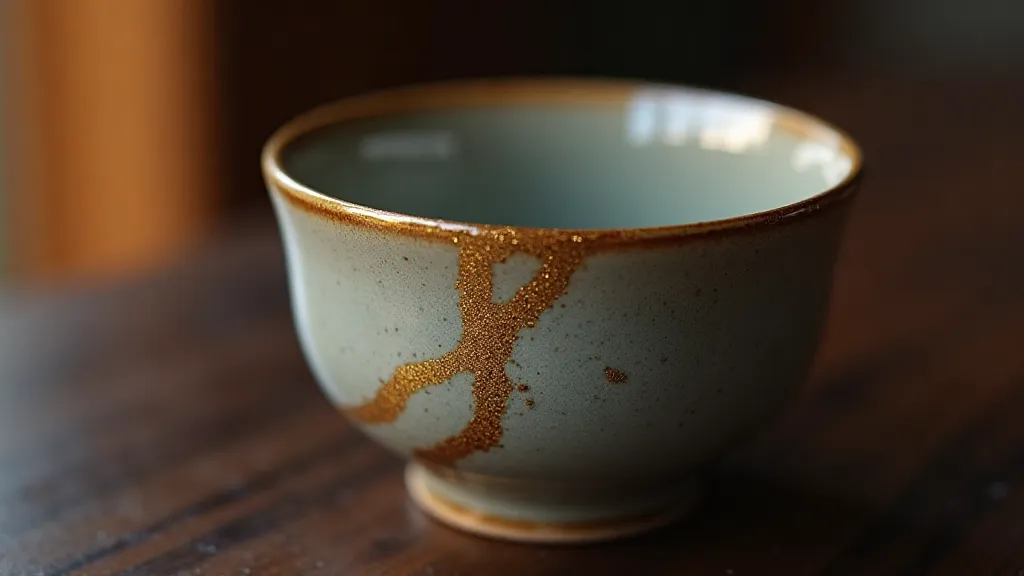Fractured Narratives: Piecing Together Discarded Storylines
There’s a peculiar solace to be found in broken things. Not in the sense of finding a treasure amongst ruins, though that’s certainly part of the appeal. But in the quiet act of understanding, of recognizing beauty not in perfection, but in the evidence of a life lived, a journey undertaken, and yes, a shattering experienced. This understanding is at the heart of Kintsugi, the Japanese art of repairing broken pottery with gold, and it’s a practice that has become a surprisingly profound metaphor for my own creative process.
My writing studio isn't traditionally filled with art supplies. It’s a room designed for the meticulous arrangement of words, the careful construction of sentences, the slow unfolding of stories. Yet, nestled amongst notebooks and manuscript drafts, you’re likely to find a collection of antique accordions and, increasingly, pieces of broken pottery undergoing the slow, patient healing process of Kintsugi. The accordions, mostly salvaged from estate sales and dusty antique shops, are echoes of forgotten melodies, instruments that once filled dance halls and brought joy to countless listeners. Their broken bellows, cracked keys, and tarnished metal tell silent tales of use, neglect, and eventual abandonment.
The connection arose unexpectedly. I was struggling. Several projects, stories I’d felt passionately about, had stalled. Characters felt flat, plots felt predictable, and I was drowning in a sea of discarded drafts – what I thought of as failures. I felt like I was generating more "waste" than valuable content. A friend, sensing my frustration, suggested I try something completely unrelated to writing, something tactile, something meditative. He introduced me to Kintsugi.

The Philosophy of Wabi-Sabi and the Golden Embrace
Kintsugi isn’t merely a method of repair; it's an embodiment of the Japanese aesthetic philosophy of wabi-sabi, which finds beauty in imperfection, impermanence, and simplicity. Instead of disguising the damage, the breaks are accentuated with a lacquer dusted or mixed with powdered gold, silver, or platinum. This isn't a quick fix; it’s a celebration of the object’s history. The scars become part of its story, transforming what might have been considered worthless junk into a unique and cherished piece.
Historically, the practice is believed to have originated in 15th-century Japan, possibly at the shogun Ashikaga Yoshimasa's request. He loved the Chinese custom of repairing ceramics with rivets, but found the resulting repairs unattractive. The Japanese sought a more elegant and aesthetically pleasing method, leading to the development of Kintsugi. The use of gold was particularly significant, imbuing the repaired object with a sense of value and rarity.
The painstaking process involves carefully cleaning the broken pieces, meticulously gluing them back together, and then applying the lacquer. The gold isn’t merely covering the cracks; it’s seeping into them, filling the void, and transforming the fracture lines into shimmering pathways of light. Each piece becomes unique; the patterns of cracks, the way the gold catches the light, the subtle variations in the lacquer – all contribute to a one-of-a-kind artwork.
From Broken Ceramics to Abandoned Stories
The parallels between Kintsugi and my writing struggles became immediately apparent. Those abandoned plot lines, those discarded character sketches, those seemingly failed attempts at storytelling – they weren't failures at all. They were fragments, broken pieces of potential, waiting to be reassembled and illuminated. I realized I was too focused on the "perfect" story, the flawless execution, and was discarding anything that didn't fit that impossible ideal.
Just as a Kintsugi artist embraces the cracks, I started to embrace the imperfections in my writing. The illogical jumps in narrative, the underdeveloped characters, the moments where the prose felt clunky – these weren’t roadblocks, they were opportunities. Opportunities to re-examine my assumptions, to deepen the character's motivations, to find a new perspective on the story. I began to look at my discarded drafts not as failures, but as raw material, as a rich vein of potential waiting to be mined.

The Craftsman’s Touch: Patience and Reverence
Kintsugi demands patience and reverence. It’s a process that unfolds slowly, requiring a delicate touch and a deep respect for the materials. The artist doesn’t force the pieces together; they allow the glue to do its work, gently nudging them into alignment. Similarly, writing often requires this kind of mindful approach. Sometimes, the best thing to do is to step away from a story, to allow it to simmer in the back of your mind, to let the subconscious work its magic.
The beauty of Kintsugi also lies in the fact that it’s imperfect. The gold lines are never perfectly straight, the edges are never perfectly smooth. There are always slight variations, subtle imperfections that add to the object's character. This resonates with the writing process as well. A story is never truly "finished;" it’s always evolving, always open to interpretation. The imperfections are what make it real, what make it human.
Furthermore, the knowledge and skill required to perform Kintsugi well is an entire craft. It's not something easily mastered. Likewise, achieving a degree of mastery in creative writing takes years of dedicated practice, careful study of the craft, and a willingness to learn from mistakes.
A Story Restored, A Heart Renewed
Now, when I encounter a stalled story, a character who feels flat, a plot that feels predictable, I don't feel the urge to discard it. I see it as a broken piece, a fragment of potential waiting to be reassembled and illuminated. I remember the golden embrace of Kintsugi, the way the cracks become pathways of light, and I approach the writing process with renewed patience, reverence, and a willingness to embrace the imperfections. The broken pieces aren't signs of failure; they’re invitations to create something new, something beautiful, something profoundly meaningful. They are, in essence, opportunities to tell a story not just once, but again—and differently this time.






